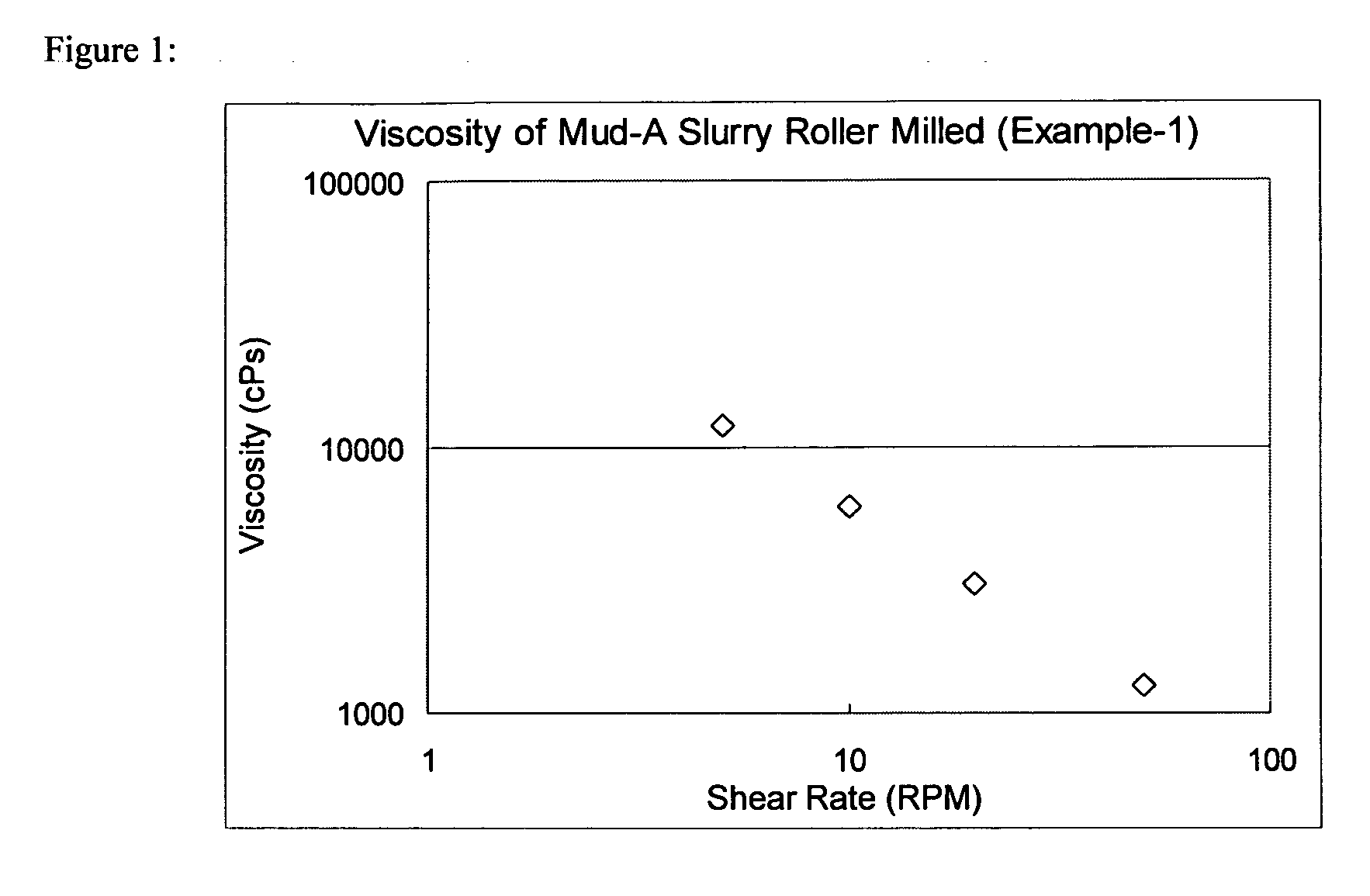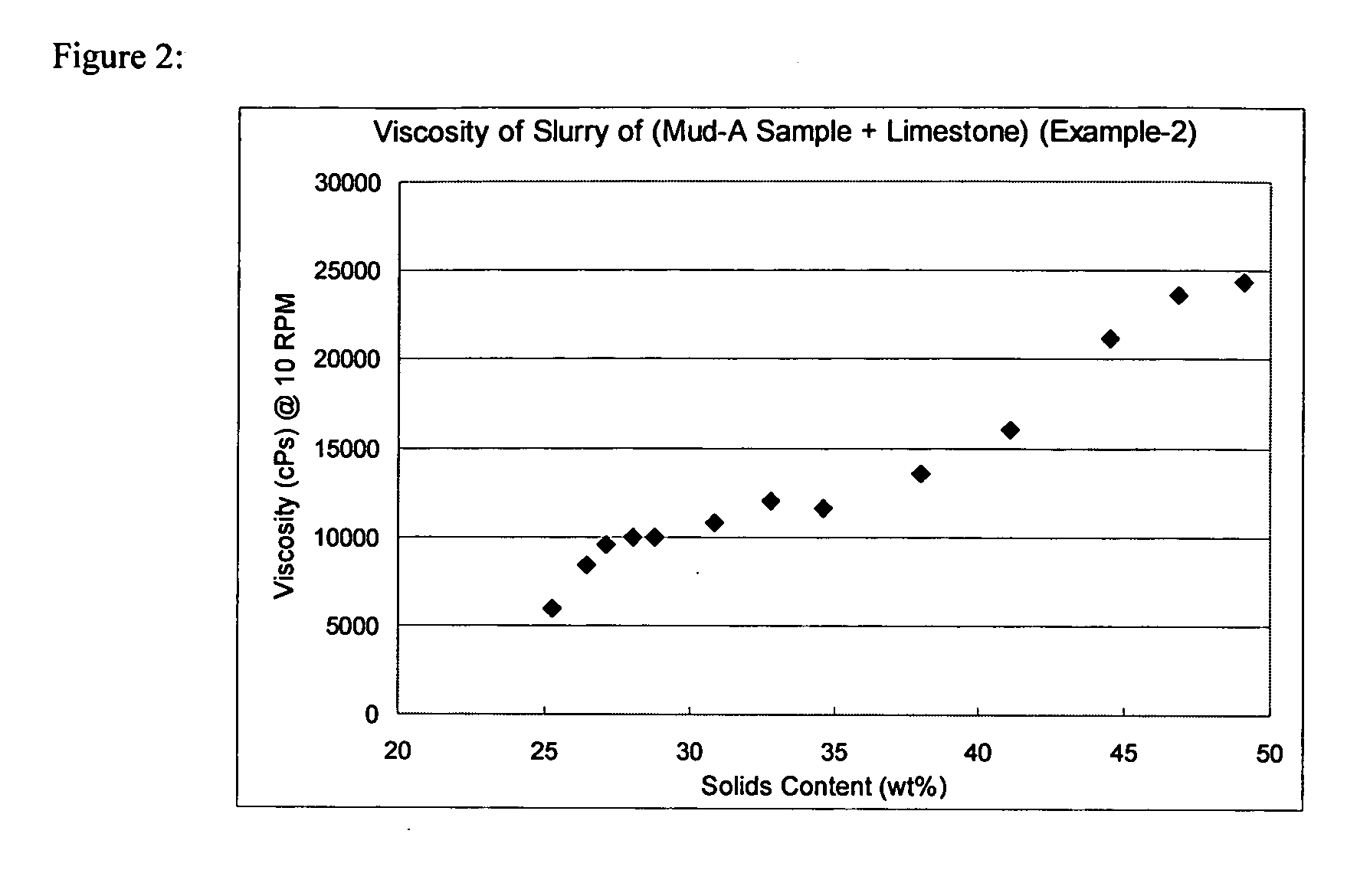Decontamination of sediments through particle size reduction and stabilization treatment
a technology of stabilization treatment and sediment, applied in the field of deco, can solve the problems of high levels of metals, especially heavy metals in sediments and soils, not receiving equal attention, and far more reaching to the health and quality of life of people living close to the contaminated sites
- Summary
- Abstract
- Description
- Claims
- Application Information
AI Technical Summary
Benefits of technology
Problems solved by technology
Method used
Image
Examples
example-1
[0053]A slurry of contaminated mud sample-A was prepared by combining a milled mud sample prepared using a roller mill and distilled water. The roller mill is a three-roller mill made of stainless steel, while the scrubbing blade is made of bronze. The roller mill used, Model S65, is from Zili Chemical and Machinery Ltd., Changzhou, China. It provides coarse milling. The mud sample has a solids content of 42.04 wt % determined at 550° C. for 2 hrs using a muffle furnace. A slurry was prepared by combining 736 grams of milled mud sample and 491 grams of distilled water. This slurry gave a solids content of 25.22 wt. %. The viscosity curve of the slurry measured at 6° C. using a Brookfield DV-II viscometer and a #3 spindle is given in FIG. 1. This slurry has a pH of 7.9 measured at 6° C.
example-2
[0054]A slurry was made by adding limestone powder (from Tianjin Chemical Reagent and Scientific Equipment Ltd., Tianjin, China) into the slurry obtained in Example-1. Limestone powder was added to 320 grams of the 25.22 wt % mud sample-A slurry while under mixing using a spatula. Viscosity and pH of the limestone added slurry were measured using the Brookfield DV-II viscometer and a Fisher Scientific pH meter respectively. Solids content of the slurry is calculated based on the starting solids content of the mud sample-A and the amount of limestone added. For example, after adding 40.0 grams of limestone into the 320 grams of mud sample-A slurry having solids content of 22.52%, the solids content becomes 33.53 wt %. FIG. 2 presents changes of slurry viscosity as a function of solids content.
example-3
[0055]A formulation was prepared by combining a slurry according to Example-1 with a milled slurry of 80% calcined limestone. The latter was prepared by combining 800 grams of calcined limestone and 200 grams of distilled water to make a paste-like material which was then milled once using the Zili roller mill Model S65 from Zili Chemical and Machinery Ltd., Changzhou, China. An amount of 250.0 grams of the 80 wt. % limestone milled slurry was added to the 1,000 grams of roller milled mud slurry-A. The resultant slurry had a solids content of 36.18 wt %. This slurry was then milled using an Eiger Mini 250 ML from Eiger Machinery Inc., Grayslake, Ill. The milling medium used was 2.00 mm zirconia microspheres. An amount of 699 grams of milling beads were loaded into the mill. Milling was conducted at 3600 RPM. Viscosity of both milled and none-milled slurries was determined. The results are given in FIG. 3. The measurements-were made using a Brookfield DV-II viscometer and the #6 spin...
PUM
| Property | Measurement | Unit |
|---|---|---|
| wt % solids | aaaaa | aaaaa |
| wt % | aaaaa | aaaaa |
| temperature | aaaaa | aaaaa |
Abstract
Description
Claims
Application Information
 Login to View More
Login to View More - R&D
- Intellectual Property
- Life Sciences
- Materials
- Tech Scout
- Unparalleled Data Quality
- Higher Quality Content
- 60% Fewer Hallucinations
Browse by: Latest US Patents, China's latest patents, Technical Efficacy Thesaurus, Application Domain, Technology Topic, Popular Technical Reports.
© 2025 PatSnap. All rights reserved.Legal|Privacy policy|Modern Slavery Act Transparency Statement|Sitemap|About US| Contact US: help@patsnap.com



